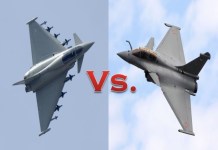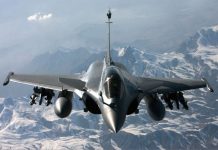The scene at the Alaska conference between the US and China was a crude reflection of another cold war in the making. Both US and Chinese officials exchanged angry remarks, leveling accusations and trading barbs at each other during the Biden administration’s first official engagement with Beijing.
Biden’s no-holds-barred approach towards China was there for everyone to see when an acrimonious confrontation ensued as the officials faced each other at the table.
While the US National Security Advisor Jake Sullivan accused China of cyberattacks and human rights violations in Xinjiang, Yang Jiechi, Chinese Foreign Affairs Director hit back saying the US itself had a dubious record when it came to human rights, citing the ‘Black Lives Matter’ campaign.
Needless to say, the relations between the two superpowers have reached their lowest point and are expected to degrade further in the coming years. China’s unrelenting stance on issues such as the aggression in the South China Sea, alleged genocide in Xinjiang, stifling of democracy in Hong Kong, among others, is expected to prolong that confrontation, which could even snowball into a military exchange.
As the US Secretary of State Antony Blinken made it clear last week in Tokyo, the US “will push back if necessary when China uses coercion or aggression to get its way”. He also called the US-China relationship as the “biggest geopolitical test of the 21stcentury”.
#ChinaUS officials continue talks in Alaska https://t.co/ZQHfOXYpJM pic.twitter.com/KWUdueGacf
— CGTN (@CGTNOfficial) March 19, 2021
With both sides unwilling to compromise, the relationship between the two countries is bound to get ugly, experts warn. Many strategic affairs analysts call it the new ‘Cold War’, a situation that existed between the US and the erstwhile Soviet Union in the latter half of the last century.
While the current impasse between the US and China may be similar to that in many respects, it is in no way similar to the situation that existed between two world powers towards the end of the 20th century.
The Soviet Union and its allies were completely isolated, economically and politically, during the Cold War and no exports were allowed. Whereas China could be called a keystone of the modern world economy and, in fact, a major trade partner of the US itself. More importantly, the original Cold War involved a weapons race and domination of space technologies.
On the other hand, the US-China rivalry is witnessing an unprecedented competition involving artificial intelligence and 5G, two technologies that are redefining humanity’s future.
Dramatics underway in Alaska as US-China meeting gets underway.
After harsh opening statements from both sides, Blinken and Sullivan asked press to remain to respond.
A back + forth ensued, with Chinese officials demanding press remain to cover THEIR response to the response.
— Kevin Liptak (@Kevinliptakcnn) March 18, 2021
The Cold War era gave rise to a largely bipolar world order, with the dominance held by two static camps, along with a significant non-aligned bloc that America believed supported the Soviets. In a situation that exists today, there are multiple power centers, each with its own independent stand on global political dynamics. The current order is not that of “you are either with us or against us” nature.
The Cold War led to the collapse of the Soviet Union, which was crippled both militarily and economically towards the end. On the other hand, China is growing stronger and more powerful each year and it is expected the communist nation would overtake the US economy by the end of this decade. So, drawing parallels between the Cold War and the current standoff doesn’t make sense.
And as diplomatic analyst Jonathan Marcus writes in BBC – “This is the essential rivalry of our times. Cliché and false historical analogy must be set aside. This is not a ‘Cold War mark II’ – in fact, it is something far more dangerous.
China is already a peer competitor of the US in many areas. And while not yet a global superpower, it is very much a military rival to the US in the areas that matter most to China’s own security.”
China Overtaking US On Multiple Fronts
Experts agree that the US technological innovation has taken a backstage, the country’s drive for modernization of its military is stagnating with China overtaking it in multiple military capabilities, such as hypersonic missiles, the dominance of electromagnetic spectrum, artificial intelligence, among other things, which will redefine warfare in the future.
Beijing’s inexorable military and economic progress, even under a global pandemic that crippled even the most powerful nations, indicates that China is not stopping until it has overtaken the leading competitor. The US has realized the threat China poses, and its recent decision of strengthening QUAD and transforming it into a military alliance reinforces that supposition.
Will the US be able to confront China with the QUAD alliance? Will post-Trump America be taken seriously by the world? These are questions that could determine the outcome of the US-China confrontation. It’s a confrontation that not only affects global security and the possibility of a nuclear Armageddon but issues such as climate change, upon which the fate of the world depends.
The absence of consensus on such important issues leaves the fate of the world in peril. A stable and healthy global order is what’s needed for humanity to thrive, and too many things depend on it.
Follow EurAsian Times on Google News




